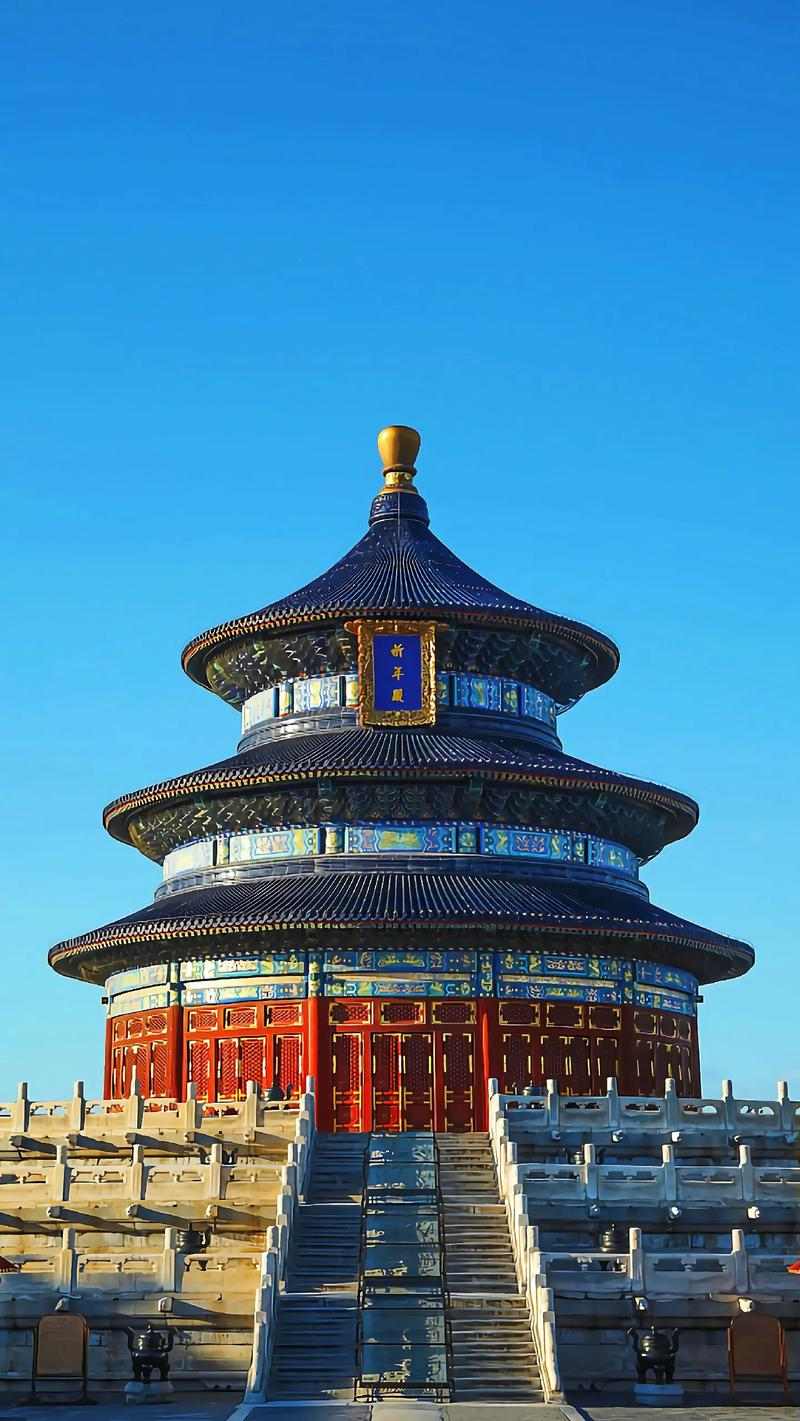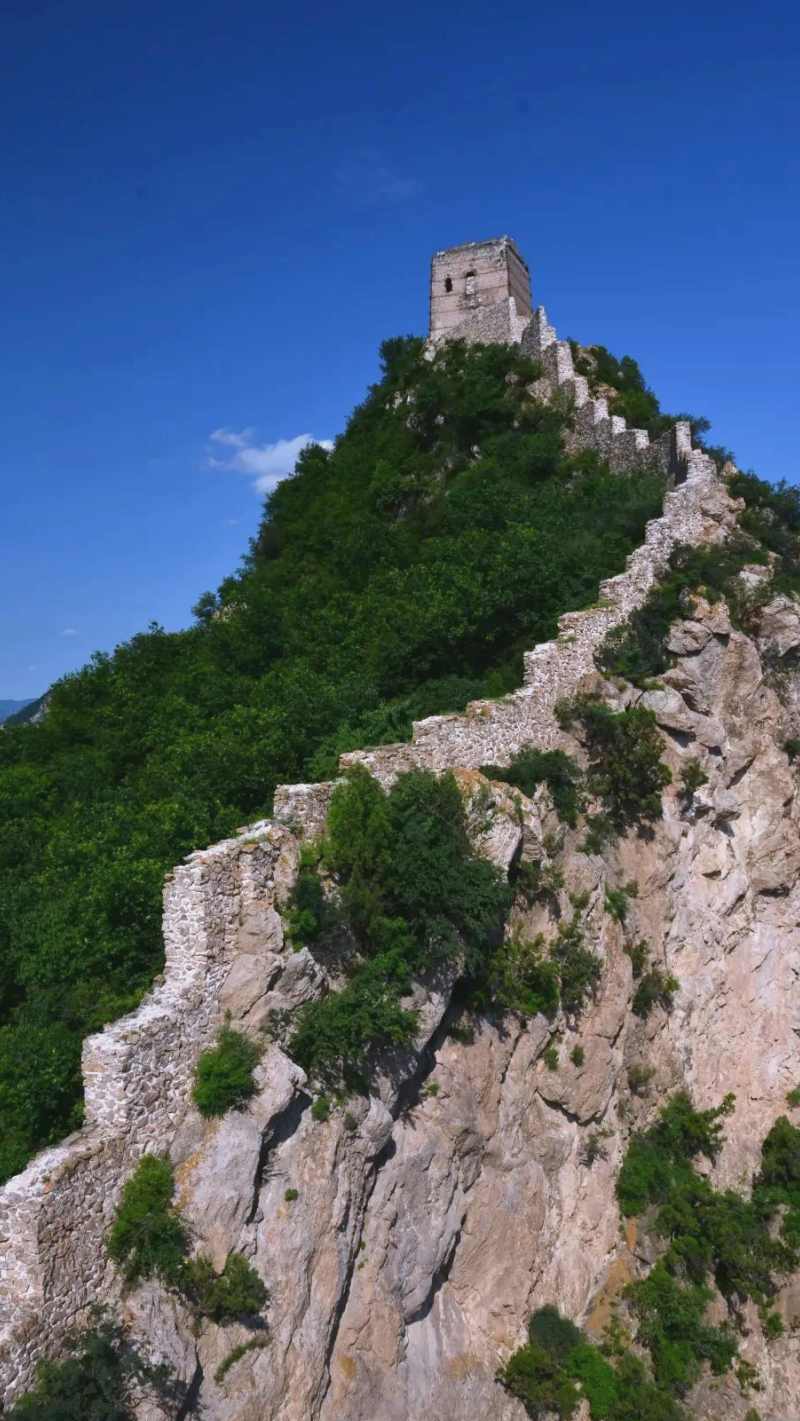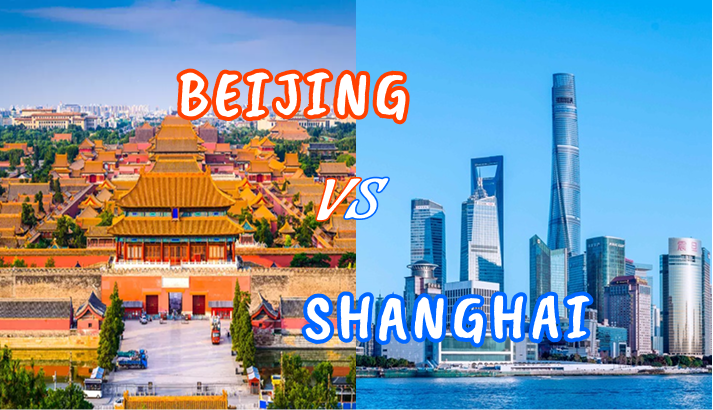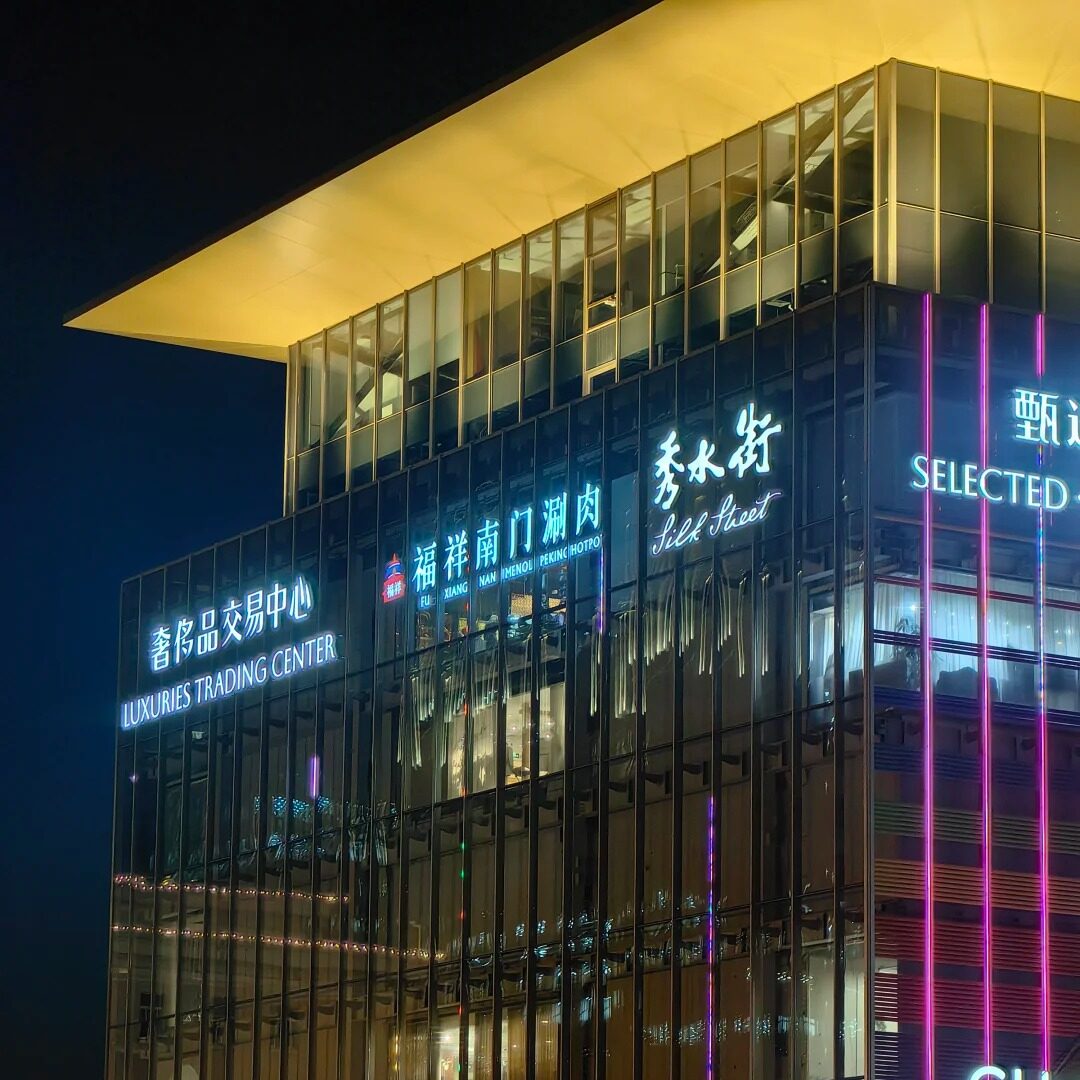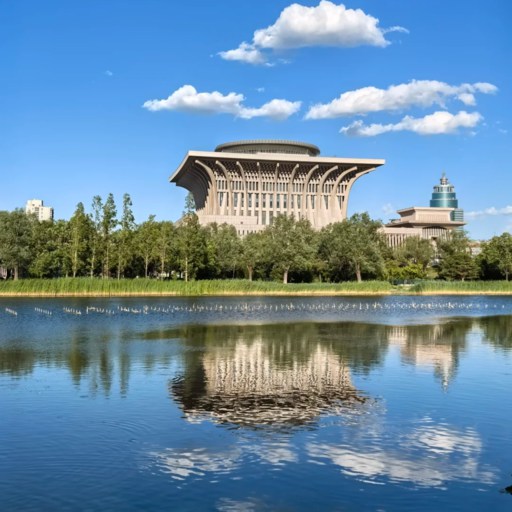In Beijing everyone has a different story. A few refer to spicy street snacks or neon signs illuminating vast arteries, and others speak of the peace of the hutong lanes, where locals deal cards and drink tea. These fragments make up a city that can feel new with every encounter. The Great Wall and the Forbidden City might be its famous sites, but the city has even more layers to peel off. Walk slowly and you notice tai chi in parks, dumplings steaming in alleys, bikes leaned against red lanterns. Together, these moments indicate that there are countless fun things to do in Beijing, from world-renowned attractions to hidden corners that secret curious travelers.
Discovering Beijing: Must-See Fun Landmarks
- Meridian Gate
- Hall of Prayer for Good Harvests
- Simatai
The Forbidden City and Meridian Gate: Hidden Stories + Night Openings
The Forbidden City is more than palaces. It reveals layers of history in every hall and courtyard. Beyond the main routes, you can step into the Cold Palace and the Treasure Gallery, where tales of emperors and concubines come alive. Painted ceilings, quiet courtyards, and hidden treasures make even a short walk feel like a cultural adventure. Many visitors call it one of the most fun things to do in Beijing because it mixes famous landmarks with secret corners.
In 2025, night openings add extra magic. The Meridian Gate glows while the Hall of Supreme Harmony lights up like a film scene. The courtyards grow calmer after dark, giving space to families, couples, and photographers. Tickets are 60–100 RMB, bookable on Trip.com, Klook, or the official app. Metro Line 1 (Tiananmen East/West) stops close by. Guides often share vivid stories of emperors who once walked these corridors. For culture lovers, the mix of history, lights, and quiet moments makes this visit one of the most unforgettable fun things to do in Beijing.
Looking beyond guidebook clichés in the capital city? Explore Beijing Places of Interest: Big Sights and Hidden Gems
Wild Great Wall (Jiankou/Simatai): Even More Adventurous Hikes
While Badaling is often crowded, Jiankou and Simatai reveal a wilder side of the Great Wall. The stairs are steep, the walls rugged and the climb is tough, but the views of the mountains are to die for. This is among the most fun things to do in Beijing for travelers looking for something adventurous. Tickets are 40-60 RMB, and can be purchased online with tourist buses from Dongzhimen or private cars being the common modes of transport.
Simatai is unique in that sections open at night, for a surreal walk under the stars. Sealed beam flashlights and lanterns lead the way, adding an element of mystery and fun! Its steep ridges challenge your endurance but offer breathtaking photo opportunities for hikers. It helps to go with a guide, bring water and wear sturdy shoes. Including this hike in you plan allows you to not only witness the epic grandeur of the Wall, but also doing one of the coolest fun things to do in Beijing. Tickets prices ranging from 40-60 RMB are also available on CTrip, Klook or the official site. Public tourist buses from Dongzhimen as well as private cars are popular means of transport.
Morning Path at Temple of Heaven
The Temple of Heaven in the early morning reveals another face of the city. Residents meet at the Prayer Hall Square to perform Tai Chi, play instruments such as the erhu, sing opera and fly kites. When you join them you feel you belong to daily life not just a visitor driving through. There is a 15 RMB entrance fee for the off season, and a 35 RMB entrance fee for peak season- only at the gate or with CTrip and Klook. Metro Line 5 (Tiantan East Gate) lands right at the entrance.
As the sun rises, the light blossoms on the Hall of Prayer for Good Harvests and you hear faint laughter mingling with the strains of instruments. A rare opportunity to watch Beijing come to life on its own terms. AND If they agree to participate, visitors frequently say it is a highlight of their trip. A few moves of Tai Chi, or simply chatting with the locals, who are interested in their foreign visitors, makes this a special way to ease into the day.
Wondering which landmarks and local gems define Beijing in 2025? Check The Best Things to Do in Beijing: Top Attractions for 2025
Experiencing Beijing: Unique Cultural Activities
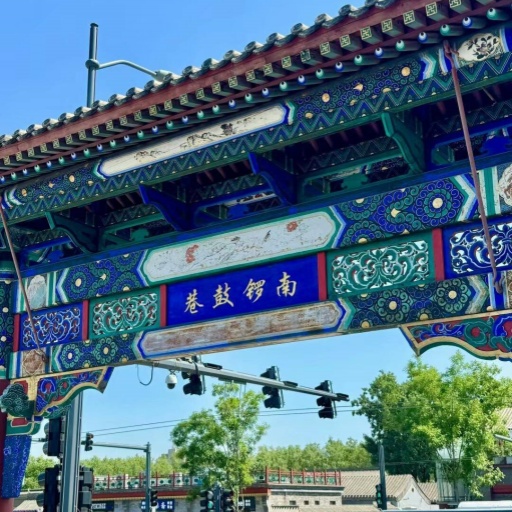
Beijing Hutong Nanluoguxiang
Hidden Hutong Cafés and Creative Shops
Beijing’s hutongs hide indie cafés, shops, and quirky bookstores that reveal daily life. On a lane near Nanluoguxiang, a plain door may open to a vintage café with cats in the yard and gramophone music inside. Drinks usually cost 30–60 RMB, and the spot is easy to reach via Metro Line 6. Many cafés also host art nights, and hutong shops sell handmade crafts. Spending time here blends modern lifestyle with old architecture, making a slow walk one of the most relaxing fun things to do in Beijing.
Exploring hutongs slowly lets you enjoy local rhythms. Visitors say wandering these alleys feels like stepping back in time while still enjoying today’s comforts. Creative corners, small bookstores, and tea shops appear at random, and these discoveries turn a casual walk into one of the fun things to do in Beijing that balances culture and leisure.
Handicraft Workshops in Nanluoguxiang (Calligraphy, Opera Masks)
Instead of buying souvenirs, try a calligraphy class or paint a Peking Opera mask. Sessions cost 80–150 RMB, and last about an hour. The area is served by Metro Line 6/8. These workshops allow you to learn skills and hear stories from local artists, making them one of the most interactive fun things to do in Beijing.
Teachers often explain the history of Chinese characters or the symbolism of mask colors while guiding your work. The result is more than a souvenir—it becomes a personal memory of your trip. Many travelers consider this hands-on activity one of the most rewarding fun things to do in Beijing.
Wondering which Beijing hutong best shows off local culture? Start with Nanluoguxiang Guide 2025: Old Hutongs and Local Flavors in Beijing
Traditional Bathhouse Experience
Hidden alleys still hold bathhouses where locals soak, scrub, and chat. Prices range 50–100 RMB, with services like massages or foot therapy, bookable via Dianping or CTrip. Many are near hutong areas along Metro Line 2 or 6. The atmosphere of splashing water, hot pools, and chatter introduces you to a rhythm of life beyond tourist sights, making it one of the most authentic fun things to do in Beijing.
Some bathhouses also serve tea or simple meals, inviting guests to linger. Joining this centuries-old custom connects you with the city’s daily heritage. For visitors seeking immersion beyond sightseeing, the bathhouse remains a cultural highlight and one of the more unusual fun things to do in Beijing.
Seasonal Fun: Limited-Time Activities in Beijing
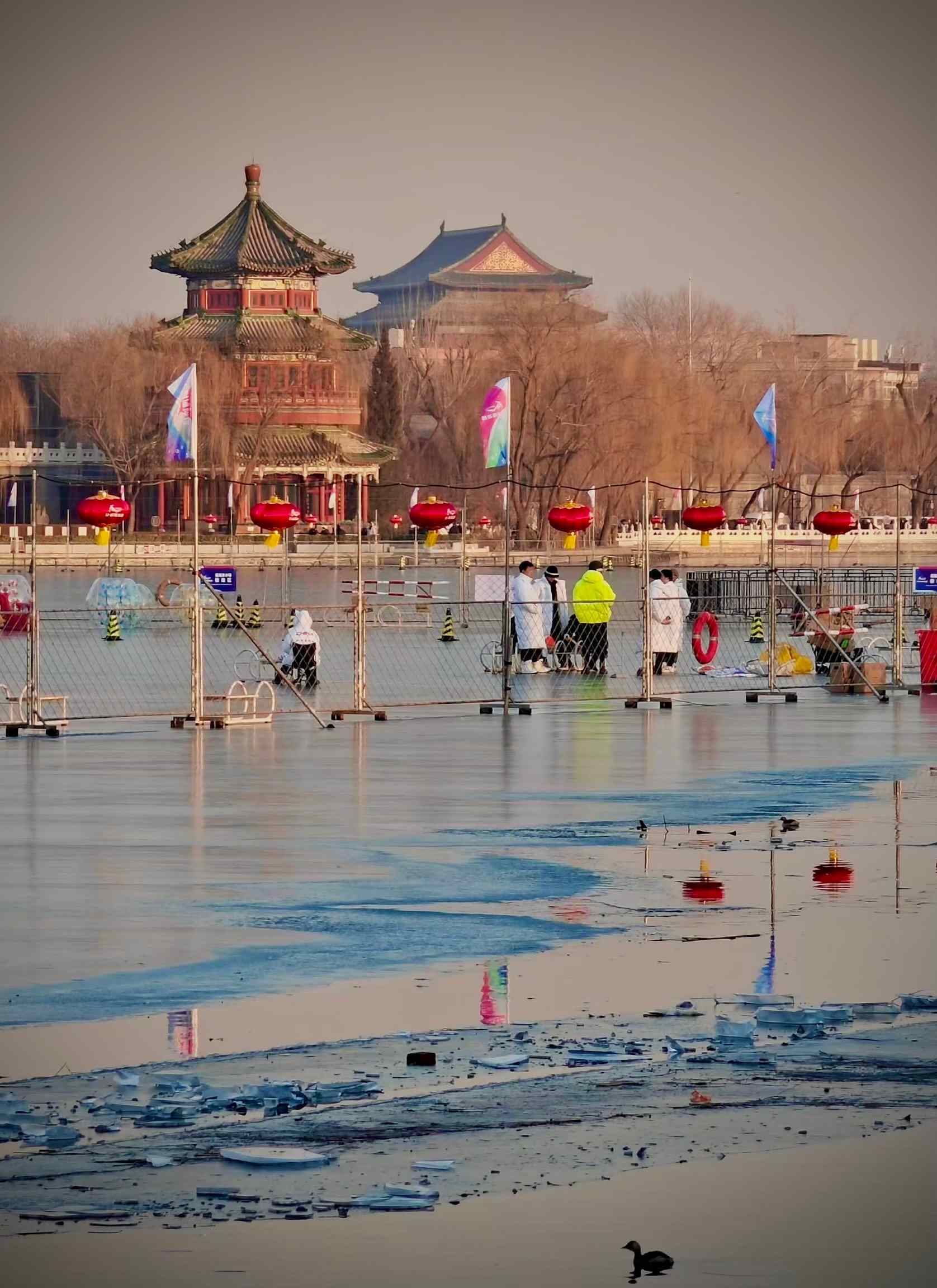
Houhai Lake
Winter: Ice Cars on Houhai Lake + Hotpot
When Houhai freezes, renting an ice car and gliding across the frozen lake is both playful and nostalgic. Families and couples gather here to laugh and race across the surface, turning a cold day into one of the most exciting fun things to do in Beijing. Some visitors bring snacks and music, turning the lake into a cheerful playground. The sight of children learning to steer ice chairs and groups competing in races makes the area lively even in sub-zero weather. Rentals are arranged on-site for about 50 RMB/hour, and the area is easy to reach via Metro Line 6 (Beihai North) or Line 8 (Shichahai). Afterward, stepping into a nearby hotpot restaurant brings comfort, with lamb slices and vegetables bubbling in broth. Meals usually cost around 120 RMB/person, bookable on Dianping or CTrip.
Spring: Cherry Blossoms and Fruit Picking
In March and April, the cherry blossom avenue of Beijing Botanical Garden bursts into pink and white, drawing crowds of photographers and families. Walking under the blossoms feels like walking through a dream, and it is often listed as one of the must-try fun things to do in Beijing during spring. Entry tickets are 10 RMB, available through the official site. Metro Line 4 (Beigongmen) plus a short bus or taxi ride takes you directly there. Beyond the city, suburban farms invite visitors to pick strawberries and cherries, usually 30–50 RMB/kg, with access by suburban buses or car.
Summer: Rooftop Movies in Historic Buildings
Summer nights in Beijing are lively and warm, making rooftop movie screenings an unusual yet charming pastime. Sitting on a hutong rooftop with a cool breeze and hearing neighbors chatting while classic films play under the stars creates a sense of community. Tickets usually cost 20–50 RMB (sometimes free), and listings can be found on local event sites. The hutong areas are accessible by Metro Line 6 or 8. Visitors say this mix of film and city life is one of the most surprising fun things to do in Beijing, offering a relaxed social vibe not found in regular theaters.
Autumn: Red Leaves at Fragrant Hills
By October, Fragrant Hills Park transforms into a canvas of red and gold, attracting photographers and hikers from across China. Walking along the trails surrounded by fiery leaves feels like entering a painting, and many consider this seasonal outing one of the top fun things to do in Beijing. Entry is 10 RMB, bookable on the official site. The park is best reached via Metro Line 4 (Xijiao Station) plus a short bus. Visiting early mornings or weekdays helps avoid the heaviest crowds.
Trendy Beijing: Unlocking Modern Urban Experiences
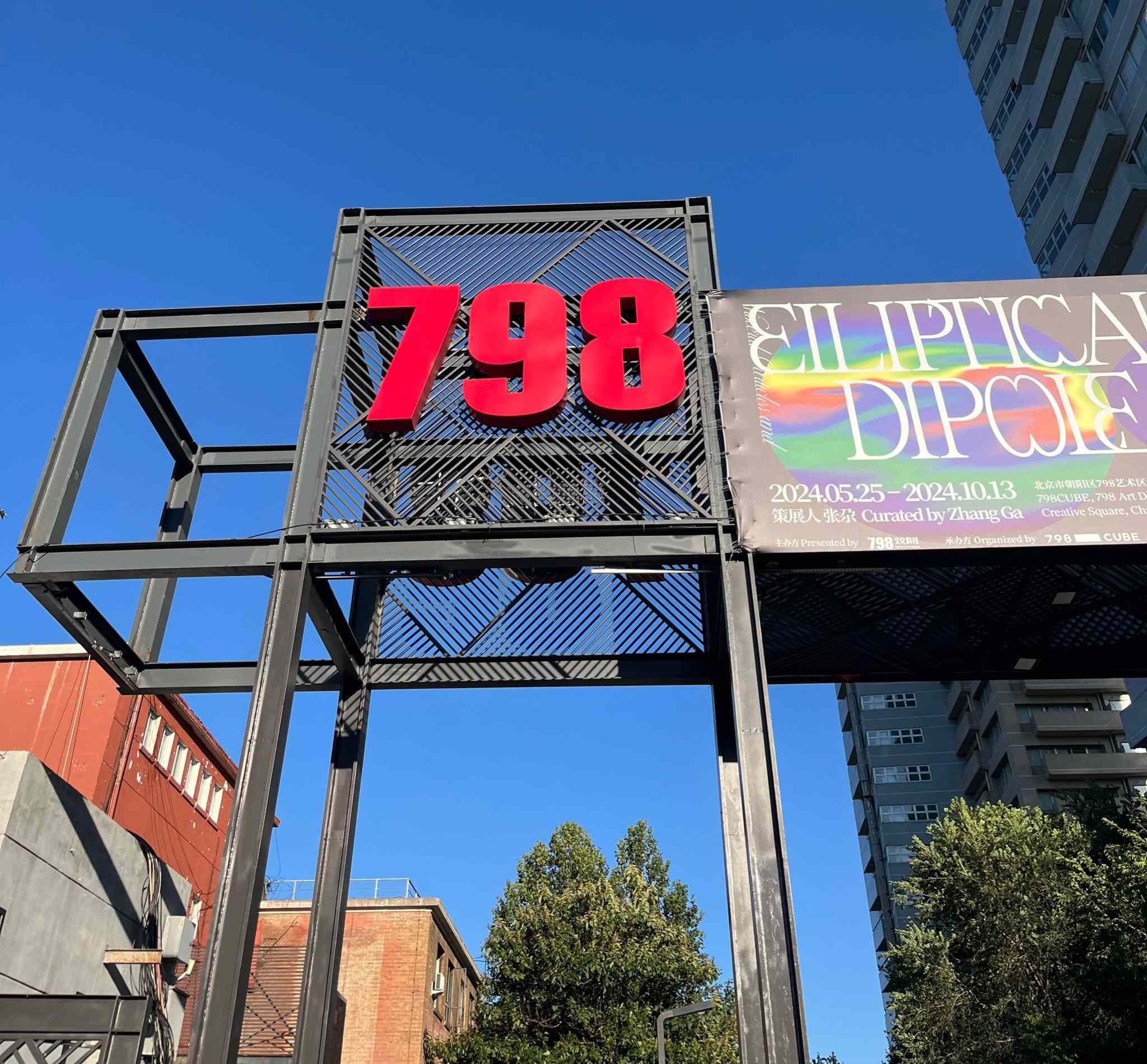
798 Art District
Rooftop Parties in Sanlitun
Sanlitun nights belong to the young. Rooftop bars mix cocktails with DJs and themed parties, and the skyline adds the perfect backdrop. Drinks are around 80–150 RMB, often with free entry. Many travelers meet locals and expats here, turning it into a social hub where laughter lasts until late. Seasonal themes and live shows keep the vibe fresh. For newcomers, Sanlitun rooftops are one of the most lively fun things to do in Beijing, easy to reach by Metro Line 10 or Line 2.
Immersive Exhibits at 798 Art District
798 is no longer just galleries—it now features digital and interactive exhibits. Walking through projections and soundscapes feels surreal, like stepping into art itself. Tickets cost 100–200 RMB, bookable on CTrip, Klook, or the official site. Metro Line 14 or 13 plus a short taxi gets you there. Exhibits change often and many are family-friendly, with games, multimedia, and plenty of photo spots. The district also has cafés and shops, so you can relax after exploring. For me, it’s one of the most creative fun things to do in Beijing.
Want to see Beijing’s coolest creative hub? Read 798 Art District Beijing: A Local’s Complete Guide to China’s Most Inspiring Art Zone
Underground Live Houses
Beijing’s live music scene is buzzing, from rock to hip-hop. Venues like MAO and School host weekly shows where the vibe is raw and energetic. Tickets are 80–200 RMB, available on Trip.com, Damai, or at the door. Metro Line 2 or 6 stops nearby. Standing shoulder to shoulder with fans and feeling the bass makes this one of the most thrilling fun things to do in Beijing. The close setting brings you face-to-face with new bands and local youth culture, making each night unforgettable.
Travel Guide: Making Your Trip to Beijing Easier
Transport (Metro Highlights, Shared Bikes)
Beijing’s metro is the most efficient way to get around, covering nearly all attractions. Fares range from 3–9 RMB depending on distance, and a rechargeable IC card (Yikatong) saves time. Key stops such as National Library and Olympic Park are attractions themselves. Shared bikes are available at almost every metro exit; scan via Alipay or WeChat to ride. Cost is 1–2 RMB/ride, perfect for short hops through hutongs or from station to scenic sites.
Accommodation (Art Hotels & Hutong Stays)
Hutong guesthouses provide a cozy local vibe, usually in traditional courtyards. Some accept foreign guests, with prices from 300–500 RMB/night. Art-themed hotels near 798 blend design and convenience, averaging 600–1000 RMB/night. International chains in Sanlitun or Guomao remain the safest option for foreigners, with English service and global standards, starting from 800 RMB/night. Always confirm whether a hotel is licensed to host foreigners before booking.
Local Tips
- The best food is often hidden in hutongs; look for small eateries with long local queues.
- Mobile payment (Alipay/WeChat) works almost everywhere; cash is rarely used except in very small shops.
- Avoid peak tourist times (10 a.m.–2 p.m.) for smoother visits; early mornings and late afternoons are quieter.
- Buy tickets online whenever possible to avoid queues at major sights.
- Carry a portable charger since maps, translation, and payment apps will be in constant use.
FAQs for Planning Your Trip: Fun Things to Do in Beijing
Q: Is Beijing safe at night?
For the most part, despite its label as an “after-hours” paradise, central Beijing is quite safe at night, particularly in the bustling areas like Wangfujing, Sanlitun and Houhai, all filled with shops, bars, and food stalls that stay open well into the night. Police patrols are frequent, streets are well-lit, and many neighbors are out walking, dancing or exercising in the late or early hours. Tourists generally feel at ease, but as in any big city, it’s wise to keep your bag close, steer clear of dark, empty alleyways and use official taxis, or ride-hailing apps for longer rides.
Q: What’s the best place to take a photo?
The corner tower of Forbidden City at sunrise is the most iconic shot that you’ll have reflections from the moat on the warm golden light. Houhai Lake provides scenic, romantic waterfront views day or night, while the 798 Art District supplies gritty backdrops of graffiti and converted factory walls. The hill in Jingshan Park is a nice place to take pictures of the city (panoramic view), and in the autumn the Fragrant Hills become a red forest suitable for nature photos. Even subway stations, say, National Library and Olympic Park, have interesting architecture that you can take pictures of.
Q: Just how many days does Beijing need?
Most travelers will do well to budget four to five days, a stretch that allows for three major sites at least — the Forbidden City, Temple of Heaven, plus a daylong excursion to the Great Wall — plus afternoons wandering hutongs, visiting local markets and chowing on street food. If you are a little more partial to taking it slow, or if you want to visit some of the less-visited sites, such as the Summer Palace or Yonghe Lama Temple, one week is perfect. Factor in evenings spent going to shows, night markets or rooftop bars, and the trip will feel more well-paced and relaxed.
Q: Does air quality affect travel?
Beijing does contend with smog, especially during colder months when pollution is fueled by coal burning. On some days the air is clear enough to sightsee, but heavy pollution days can leave the sky gray and visibility poor. It is a good idea to check a AQI app daily and to carry a light mask if you feel pollution sensitive. Indoor attractions such as museums and malls can be good choices on days with high pollution. The air is often cleaner and the circumstances are generally better for outdoor pursuits mostly during the Spring and autumn.
Q: How easy it is to use English in Beijing?
Attractions, hotels, airports and metro stations have English signage, and many young Saudi Arabians speak some English, especially in the service industry. In the smallest restaurants or traditional markets, English is rare, so having a translation app, phrasebook or even photos on your phone for aid will go a long way. Learning a few basic phrases such as “ni hao” (hello) or “xiexie” (thank you) will help ease conversation and make everyone’s exchange more pleasant. Locals are friendly and helpful, often going out of their way to help visitors, even if they don't speak much English.
Q: Can I pay with international credit cards?
Big international credit cards are accepted at high-end hotels, shopping malls and chain restaurants, but taxis, night markets and family-run shops commonly use mobile payments like Alipay or WeChat. Getting Alipay on a foreign card is also the simplest way to pay for anything and everything, including metro rides and street food. A bit of cash in RMB also comes in handy for small purchases in more old-school neighborhoods or jaunts to the countryside outside Beijing.

